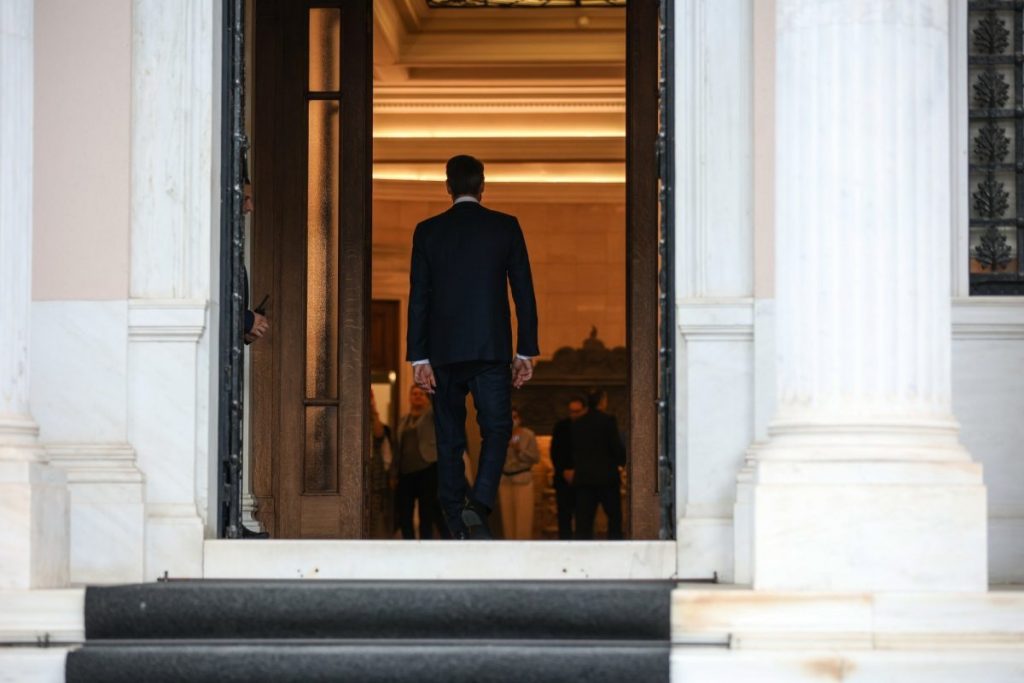Historians and ecclesiastical art experts were abuzz in Greece this past week with the revelation that a mural portrait found on a wall of a northern Peloponnese monastery’s main cathedral is widely considered as depicting the last Byzantine Emperor, Constantine XI Palaeologus.
The mural, which follows the late Byzantine ecclesiastical style prevalent in the 15th century, was located in the catholicon, or main cathedral, of the Holy Taxiarches (Archangels) Monastery, in a mountainous region some 15 kilometers south of the port city of Egio (Aigeio).
The development, which was initially presented during a research forum back in 2021, was formally announced this week by Greece’s culture ministry, and quickly generated reports by local and international media. In one telling instance, the Wikipedia page devoted to Constantine XI now features a photograph of the mural.
Archaeologists believe the fresco depicts Palaeologus (Konstantinos Dragasēs Palaiológos), who fell in battle defending the imperial metropolis of Constantinople from the Ottoman Turks on May 29, 1453. Only Constantinople and a handful of imperial holdouts remained in the mid 15th century of what was the once formidable eastern Roman empire.
The painting depicts a mature man with a lean face and elements of the regalia usually associated with emperors of the Eastern Roman empire, which would later be called Byzantium or Byzantine empire by successive historians.
“This is an authentic portrait (of Palaeologus) that accurately depicts the facial features of the last Byzantine emperor, for which, however, there is no information from the sources, nor is there any description of him by his friend, imperial courtier and fellow warrior, the historian George Sphrantzes (Phrantzes). At Mystras (a Byzantine stronghold, or Despotate, in the southeast Peloponnese), where we believe the painter who drew the second layer of the Catholicon hailed from, as Constantine Palaeologus had lived five full years as its ruler, from October 1443 to early January 1449, when he left for Constantinople after having been crowned emperor (Jan. 6, 1449). For this reason, it is very likely that the painter rendered his portraits from his own conception, i.e. the model was not an official imperial portrait but the original — the emperor himself,” according to an article in the Athens daily “Ta Nea”, which quotes Anastasia Koumousi, the head of the antiquities eforate for the prefecture of Achaia, where the monastery is located.
Dr. Koumousi’s text on the finding that was published in the minutes of the third international research meeting focusing on the archaeological efforts in the Peloponnese, which was held in Kalamata in June 2021.
The male figure depicted in the fresco wears imperial regalia and holds a Cross-bearing scepter. A gold and purple cloak is fastened with a buckle and decorated with medallions, on which the two-headed eagle is featured, with an inscribed crown between their heads – insignia characteristic of the late Byzantine era.
Further research shows that conservation efforts at the monastery in the 15th century were funded by Constantine’s brothers, the local rulers Demetrios and Thomas. According to Koumousi, the two brothers were in engaged in a bitter fraternal conflict over 1449-1450, with their elder brother Constantine achieving a truce between the latter, according to a contemporary, historian Laonikos Chalkokondyles.
“It’s possible that this reconciliation was sealed by their sponsorship of the Monastery of Taxiarches in the Aegialia region, which was at the time an important religious center in the Peloponnese at that time,” she writes.
Η.Τ.


